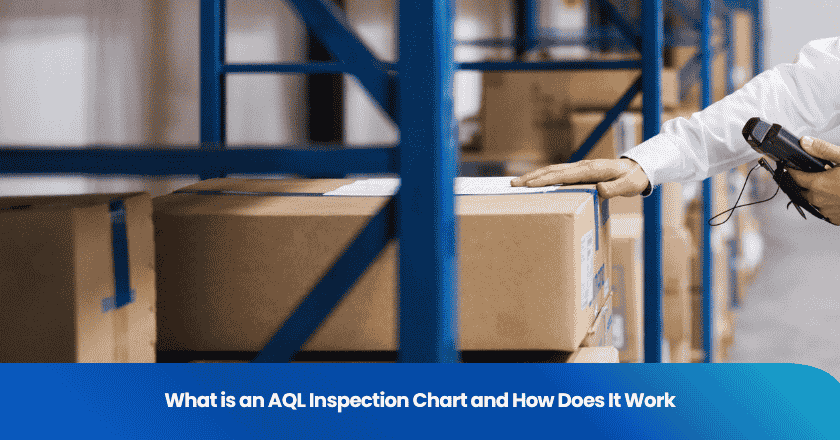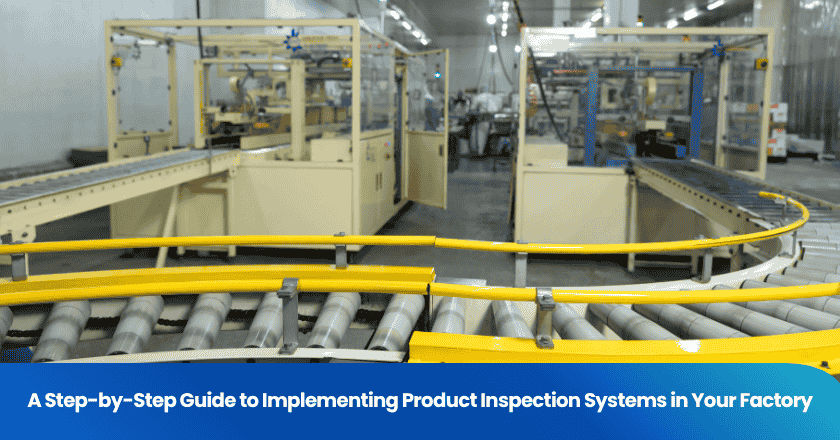
You can improve production quality in manufacturing by focusing on clear standards, employee training, and advanced monitoring. Production quality refers to the consistency and reliability of products meeting set specifications. High standards lead to business growth and strong customer loyalty.
Customer satisfaction is critical to business success because it encompasses the product itself, the quality of the service, and the overall customer experience.
Production Quality Overview
What Is Production Quality
You define production quality as the ability to consistently deliver products that meet established standards and specifications. This concept covers every stage of manufacturing, from sourcing raw materials to final inspection. When you focus on production quality, you address several key components:
| Component | Description |
|---|---|
| Quality Standards Definition | Set clear, measurable criteria for your products. |
| Raw Material Quality Verification | Inspect and test incoming materials to ensure compliance. |
| Sampling and Batch Validation | Collect and test samples during production to monitor consistency. |
| In-Process Quality Checks | Perform ongoing inspections at each stage of manufacturing. |
| Nonconformance Reporting and CAPA | Record defects and implement corrective and preventive actions. |
| Documentation and Recordkeeping | Maintain detailed records for traceability and compliance. |
| Final Product Inspection | Conduct thorough checks before releasing products to customers. |
| Continuous Improvement | Analyze data and feedback to refine processes over time. |
You also rely on qualified employees, validated processes, and robust documentation. Well-maintained facilities and clear procedures help you minimize errors and ensure compliance.
Why It Matters
Production quality plays a critical role in your manufacturing success. High standards lead to efficient operations and reduced waste. When you achieve a high First Pass Yield (FPY), you produce more units that meet quality criteria without rework, which saves time and resources. Efficient production also minimizes energy use and cuts unnecessary costs.
You gain several advantages by prioritizing production quality:
- Consistent product quality meets customer expectations.
- Satisfied customers return and recommend your products.
- Standardized workflows reduce errors and improve consistency.
- Regulatory adherence ensures you meet legal and industry standards, reducing risks.
- Certifications build consumer confidence and open access to global markets.
High production quality strengthens your company’s image, supports timely deliveries, and fosters strong relationships with suppliers. These factors enhance your competitiveness and help you adapt to changing market demands.
Product Quality Benefits
Efficiency Gains
You can achieve significant efficiency gains by focusing on product quality. When you reduce defects and address quality problems early, your production lines run smoother. You spend less time on rework and avoid unnecessary delays. Manufacturers who invest in product quality report measurable improvements:
| Efficiency Gain Type | Reported Improvement |
|---|---|
| Productivity Gains | 15-30% |
| Cost Reduction | Up to 30% |
| Faster Delivery Times | 40% |
| Right First Time Score | Increased to 97.3% |
| Annual Savings from Scrap | $1.2 million |
A high right first time score means you produce more units without errors. This approach helps you deliver products faster and use resources more effectively.
Cost Savings
Improving product quality leads to direct cost savings. You cut expenses by reducing waste and preventing defects before they reach customers. Lean manufacturing techniques, such as value stream mapping, help you identify and eliminate unnecessary steps. You can also use just-in-time inventory systems and recycle scrap materials to lower costs. AI-powered systems detect defects quickly, allowing you to make adjustments and avoid further quality problems. Early detection means less rework and fewer wasted materials. The money you save can support research, new technology, and employee training, driving future growth.
- Reducing waste lowers costs and maintains quality.
- Early detection of defects prevents further quality problems.
- Lean techniques and recycling cut overhead.
- Savings can fund innovation and skill development.
Customer Trust
Product quality builds strong customer trust. When you consistently deliver products without defects or quality problems, customers notice. Data shows that 69% of shoppers consider product quality and value as key factors in trust. In fact, 87% of customers will pay more for products from companies they trust. High-quality data and reliable processes help you maintain product quality, which leads to higher satisfaction and loyalty. Customers return when they know they can rely on your products to meet their needs every time.
Consistent product quality not only prevents quality problems but also strengthens your reputation and customer relationships.
Improve Manufacturing Quality Steps
Improving manufacturing quality requires a systematic approach. You must focus on process standardization, employee training, robust quality control systems, technology integration, and continuous improvement. Each step supports operational excellence and helps you deliver high-quality products consistently.
Standardize Processes
You set the foundation for production quality by standardizing processes. Standardized work defines the most efficient way to complete tasks in the manufacturing process. Clear procedures reduce variability and ensure that every product meets quality standards. When you implement process standardization, you create predictable outcomes and minimize manufacturing quality issues.
Standardized work helps you maintain consistent product quality and reduces errors across the organization.
Industry experts recommend several techniques for process standardization:
| Technique | Description |
|---|---|
| Process standardization | Ensures every product is manufactured consistently, reducing errors and variations. |
| Automation and system integration | Increases efficiency and reduces human errors by using machines or software for repetitive tasks. |
| Ergonomics and workstation design | Minimizes fatigue and increases productivity by optimizing workspace design. |
| Production flow management | Optimizes material and information movement, using techniques like Kanban and Just-in-Time (JIT). |
Standardized processes also support quality management system implementation. You can use statistical process control to monitor and improve process performance. For example, an automotive plant reduced defect rates by 37% within six months after adopting SPC. When you align production standards with quality standards, you achieve greater consistency and reliability.
Employee Training
You strengthen production quality management by investing in employee training. Well-designed training programs build skills that support organizational goals. When you align courses with business objectives, such as reducing machine repair costs or adopting new technologies, you drive quality improvement throughout the manufacturing process.
Structured training paths help new employees ramp up quickly. Real-time skill tracking gives you immediate visibility into skill acquisition. Aligning training with quality standards enhances productivity and quality. You can increase hazard reporting, improve overall equipment effectiveness, and minimize scrap rates by focusing on targeted training.
Continuous training ensures your workforce adapts to new processes and technologies, supporting operational excellence.
Quality Control Systems
You must establish robust quality control systems to manage and monitor production quality. Proven methods like Six Sigma, Lean Manufacturing, and Total Quality Management (TQM) help you address manufacturing quality issues and maintain high standards.
You can use statistical process control to monitor production processes in real time. Control charts help you identify process shifts before they lead to defects. Six Sigma provides a structured framework for quality improvement, enhancing operational efficiency and customer satisfaction. Lean manufacturing promotes built-in quality, reducing costs related to defects and rework. These systems support your quality management system and ensure consistent quality assurance.
Technology Integration
You drive quality improvement by integrating advanced technologies into the manufacturing process. Automation and AI-powered systems offer unprecedented speed, accuracy, and scalability. AI-enhanced statistical process control provides nuanced insights, allowing for finer adjustments and consistent quality improvements.
- AI systems analyze assembly line images to detect defects.
- Machine learning enhances the accuracy of quality control processes.
- Digital twins allow for virtual testing of processes, identifying issues before production.
AI-driven image recognition automates quality assurance by identifying defects in real time. This technology enables immediate corrective actions and ongoing product improvements. You shift from reactive detection to predictive prevention, ensuring that high-quality products meet strict quality standards.
Continuous Improvement
You achieve operational excellence by embracing continuous improvement methodologies. Kaizen focuses on small, ongoing improvements and involves employees at every level. Kanban visualizes workflow and prevents bottlenecks, enhancing productivity. Six Sigma reduces defects and process variations, ensuring sustainable improvements.
You use data to identify and improve weak spots in processes and the supply chain. Connecting all parts of the supply chain with cloud systems enables easy information sharing. Reducing waste and solving problems quickly supports continuous quality improvement. You foster a culture of agility and responsiveness, ensuring that your manufacturing process adapts to changes and maintains high standards.
Continuous improvement and regular monitoring are essential for long-term success in production quality management.
Overcoming Challenges
Change Management
You will face resistance when you introduce new quality initiatives. Employees and managers often hesitate to change established routines. Some worry about increased workloads or disruptions. Others may not understand the reasons behind new processes. You can address these concerns by involving frontline teams in testing and improving new methods. Regular meetings with cross-functional teams help you review progress and solve problems together. Early adopters can coach their peers and share success stories during team huddles. When you align incentives with quality goals, you motivate everyone to embrace change.
Clear communication and leadership support are essential for successful change management.
Resource Allocation
You must allocate resources wisely to support quality improvement projects. Balancing projects ensures that no single initiative overwhelms your team. Aligning resources with business objectives keeps your efforts focused and relevant. Advanced technology helps you optimize resource distribution in real time. Effective resource management maximizes efficiency, reduces waste, and controls costs. You also boost productivity and competitiveness by identifying skill gaps early and preparing your team for new challenges.
Sustaining Improvements
You sustain production quality improvements by building a culture of continuous improvement. Methods like Kaizen and Lean Six Sigma encourage small, ongoing changes that add up over time. Visual management systems make performance visible, helping you spot areas for improvement quickly. Standard work documentation ensures everyone follows the best methods. Preventive maintenance programs keep equipment running smoothly, reducing downtime and defects. Engaged employees play a key role—they take pride in their work, follow standards closely, and address issues before they escalate. One manufacturer saved $2.5 million in 18 months by focusing on these continuous improvement methods.
When you foster employee engagement and use proven improvement strategies, you create lasting gains in production quality.
You can elevate production quality by standardizing processes, investing in employee training, and integrating robust quality control systems. Ongoing monitoring helps you catch defects early and maintain high standards. Manufacturers who focus on continuous improvement report fewer defects, higher efficiency, and greater customer satisfaction.
Start tracking your progress with clear objectives and key metrics. A culture of quality and regular review will help you achieve lasting results.
FAQ
What is the most effective way to reduce defects in manufacturing?
You should implement standardized processes and robust quality control systems. Regular monitoring and employee training help you identify issues early. Use data-driven methods like Six Sigma to target root causes and sustain improvements.
How often should you review your production quality processes?
You should review your processes at least quarterly. Frequent reviews help you catch trends and address problems before they escalate. Use real-time data dashboards for ongoing monitoring.
Which technologies can improve manufacturing quality?
You can use automation, AI-powered inspection systems, and digital twins. These technologies detect defects quickly and optimize workflows. Machine learning tools also help you predict and prevent quality issues.
How do you measure production quality success?
Track key metrics such as defect rates, First Pass Yield (FPY), and customer complaints.Use these indicators to evaluate progress and set new quality goals.
Grow your business with TradeAider Service
Click the button below to directly enter the TradeAider Service System. The simple steps from booking and payment to receiving reports are easy to operate.



